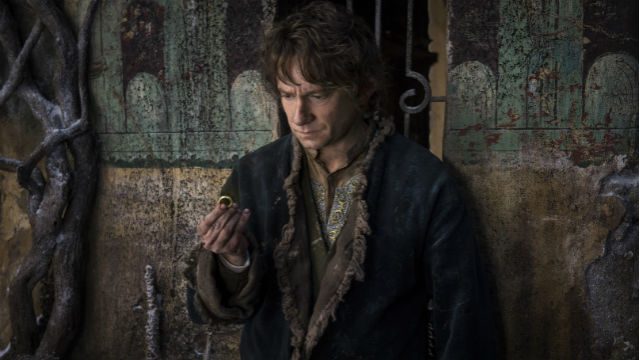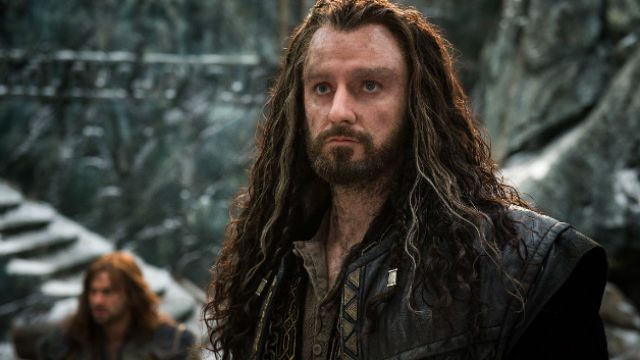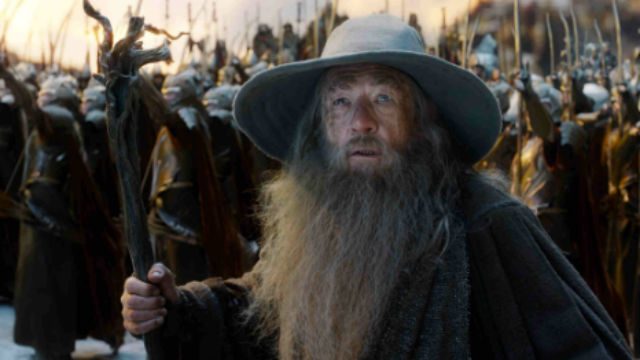SUMMARY
This is AI generated summarization, which may have errors. For context, always refer to the full article.

MANILA, Philippines – Peter Jackson has spent more than a third of his nearly 3-decade filmmaking career obsessing over J.R.R. Tolkien’s work.
The Kiwi director, whose 1987 debut feature Bad Taste mixed low budget practical effects culled from an overexposure to 50s to 60s B-movies with a unique sense of humor to wondrous effect, is most famous for mounting back in 2001 the live action adaptation of Tolkien’s The Lord of the Rings trilogy, which was considered by many as un-filmable mainly because of its scope and depth.
Throwback to Tolkien
See, others have attempted. Perhaps the most famous film adaptation of Tolkien’s popular fantasy novels prior to Jackson’s is Ralph Bakshi’s intriguingly loopy 1978 animated version, which heavily relied on rotoscoping to create the fantastical elements required by the text.
Technology, fortunately, was on Jackson’s side. With a team of thousands and the entire New Zealand behind his back, he was able to complete his 3-part film series, earning him several accolades, including a much-coveted Oscar statuette.
Of course, Jackson knows there is more to be done with Tolkien. The Hobbit, the book that served as precursor to the story of Frodo Baggins in The Lord of the Rings was left unfilmed, primarily because of certain issues with rights and other legalities. Deals were made.
Jackson, now in partnership with Guillermo del Toro, who was supposed to direct the film but begged off and just remained with the project as co-producer, resumed his love affair with Middle-earth and began production with the adaptation of the less plotty text as again a three-part series.
Watch the trailer here:
A questionable trilogy
The decision to split The Hobbit, which is shorter than any one of the three The Lord of the Rings novels, into 3 films resulted in much debate over the need for 3 full-length films. Jackson, of course, stood his ground, rationalizing his decision to the need to connect The Hobbit to The Lord of the Rings both in narrative and in mood.
Two years ago, The Hobbit: An Unexpected Journey opened to moderate acclaim, with a lot of pundits confirming earlier suspicions that the film would feel bloated and unnecessarily stretched.
However, An Unexpected Journey was sufficiently fueled by charm and humor, with Martin Freeman, who plays Bilbo Baggins with much charisma, carrying most of Jackson’s excesses with the right dash of irreverence.
The Hobbit: The Desolation of Smaug was even more delightful. This is where Tolkien’s novel explodes with spectacle, and in Jackson’s wildly creative hands, the novel’s spectacles were coupled with vicious humor. The famous barrel rides are turned into this rapturous extravaganza of impossible stunts and gory orc deaths. Bilbo’s riddle game with Gollum (Andy Serkis) is elevated into a suspenseful battle of wits. Smaug (voiced by Benedict Cumberbatch) is graduated from mere monster into a stark representation of smug greed.
A climax too long

It would certainly seem that Jackson was on the right track. Although The Unexpected Journey and The Desolation of Smaug are obviously only two separate parts of a trilogy, the films still feel like they can stand on their own. Each film had their own climaxes, own themes, own resolutions.
The Hobbit: The Battle of Five Armies unfortunately is the part of the trilogy that is troubled with the dual task of being its own film and being the last part of the trilogy. The film clearly focuses on Thorin Oakenshield (Richard Armitage), who is now suffering from greed and mistrust after regaining his kingdom from the dragon. Bilbo is relegated to the sidelines, his story of transforming from comfort-loving Hobbit to able adventurer having peaked in the last film.
Thorin’s storyline however lacks such a peak. It also lacks drama or humor. His struggles are dull, with Jackson fumbling on how to properly depict the dwarf king’s psychological battles amidst the film’s visual flair.
The other characters become backdrops as well. The inter-racial love triangle involving elves Legolas (Orlando Bloom), Tauriel (Evangeline Lilly), and dwarf Kili (Aidan Turner), introduced also in the last film, is hurriedly resolved, without further development. The same goes for the father-son conflict, also introduced in the last film, between Legolas and his elven king father (Lee Pace).
The Battle of the Five Armies concentrates on the titular battle, which Jackson took pains to create. The film’s emotional moments are sprinkled throughout the medley of spectacular deaths and ghastly dismemberments. The film is really more of a climax that goes too long, with dramatic highlights that are abandoned all too soon. The film is easy on the eyes, but sadly a tad too light on the heart.
Still an enjoyable romp

Nevertheless, The Battle of the Five Armies has Jackson at the top of his game. The Hobbit films have actually allowed Jackson to infuse into Tolkien’s world his rabid humor without feeling awkward.
Where in The Lord of the Rings trilogy, Legolas using a shield as a skateboard to efficiently behead as many orcs as possible would look strange, especially with all the seriousness the trilogy had to endure, in The Hobbit, hilarious stunts such as a literal battering ram hammering dozens of orcs all at once or a troll using his head to destroy a city’s walls feel natural. There is a looseness and brashness to The Hobbit films that deserves to be noted.
The Battle of the Five Armies hopefully ends Jackson’s creative affair with Tolkien. Jackson, for all the Middle-earth films that gave him the distinction of being one of Hollywood’s most technologically savvy filmmakers whose works are bound to be epic blockbusters, is better with films of more intimate scope like Heavenly Creatures or where he seems like he is just playing around, like in Forgotten Silver or Dead Alive. His work here is done, it is time to move on. – Rappler.com
 Francis Joseph Cruz litigates for a living and writes about cinema for fun. The first Filipino movie he saw in the theaters was Carlo J. Caparas’ ‘Tirad Pass.’ Since then, he’s been on a mission to find better memories with Philippine cinema.
Francis Joseph Cruz litigates for a living and writes about cinema for fun. The first Filipino movie he saw in the theaters was Carlo J. Caparas’ ‘Tirad Pass.’ Since then, he’s been on a mission to find better memories with Philippine cinema.
Add a comment
How does this make you feel?
There are no comments yet. Add your comment to start the conversation.